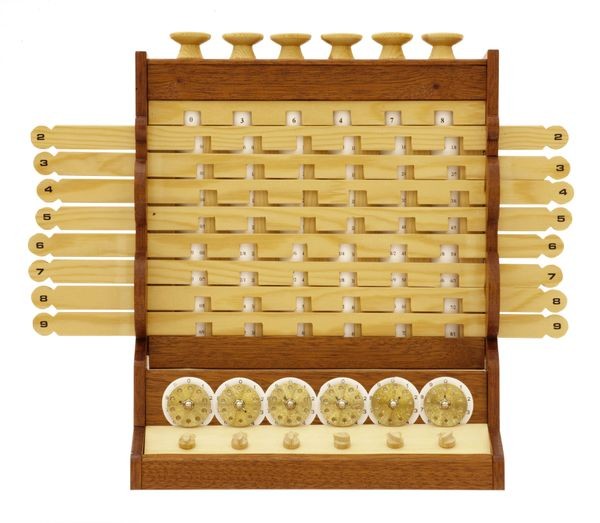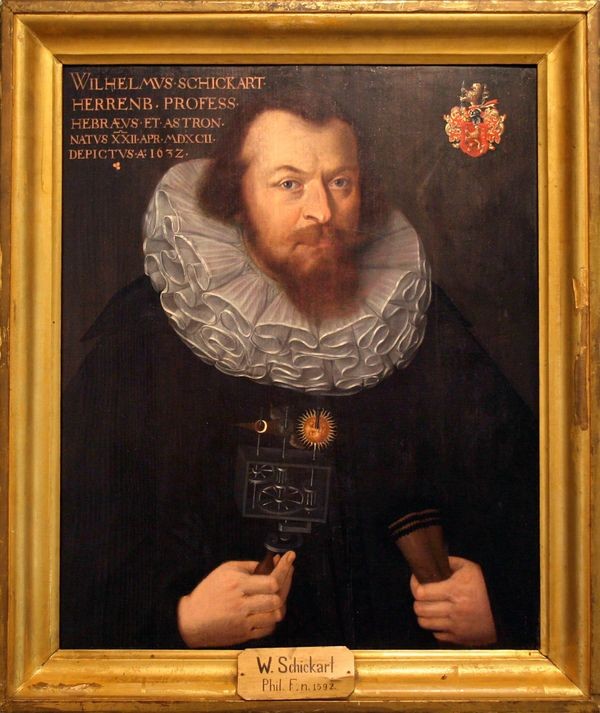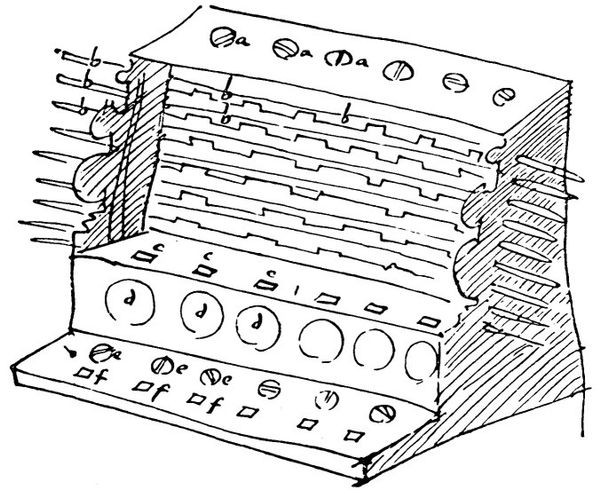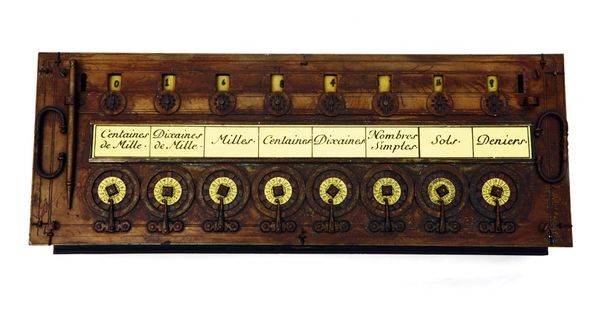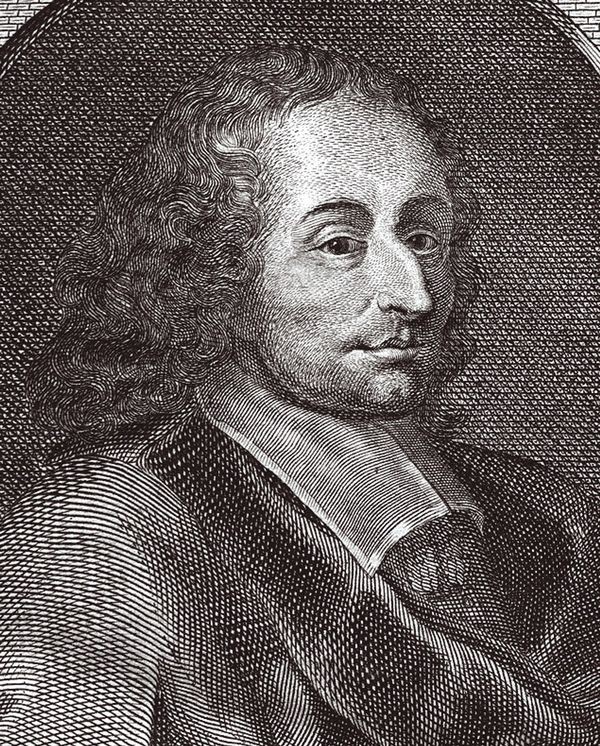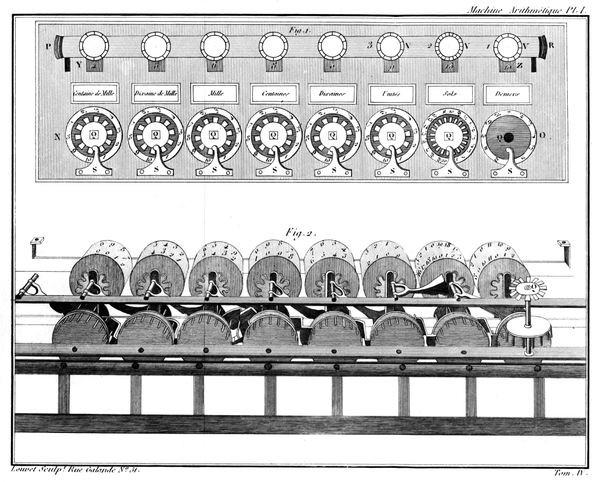Schickard’s Calculator and The Pascaline
Schickard Calculator - replica
Schickard built two calculators around 1623. One, for his astronomer friend Johannes Kepler, was destroyed by fire. The other is, as far as we know, lost. We know about them only from Schickard’s handwritten letters, which contain sketches of what he had built.
Schickards's Calculator
A 1623 letter from William Schickard to astronomer Johannes Kepler is the only surviving record of Schickard’s calculator.
Schickard combined Napier’s Bones, for multiplication and division, with a toothed-wheel system to add and subtract. It is the earliest known mechanical four-function calculator.
Wilhelm Schickard
Schickard was a minister, inventor, linguist, engraver, mapmaker, astronomer, mathematician, and university professor. Among his many inventions was a machine to help with Hebrew grammar.
View Artifact DetailA Schickard sketch of his calculator
Schickard’s design was preserved only in a few sketches and letters to the astronomer Kepler. They remained lost until 1935.
View Artifact DetailPascal Adder (Pascaline) - replica
The Pascaline was operated by inserting a stylus at, say, the number “3” position in a toothed wheel, then rotating the wheel until it hit a stop. The complicated and unreliable internal carry mechanism used falling weights instead of linked gears.
View Artifact DetailThe Pascaline
Blaise Pascal was a philosopher, mathematician…and good son. In the 1640s, he invented for his father, a tax collector, a machine that could add.
Pascal built about 50 Pascalines, making it the first adding machine produced in even modest quantity—though he only sold about 15.
Blaise Pascal
Pascal, who worked in mathematics and physics, demonstrated atmospheric pressure and the existence of vacuums. He later had a religious conversion and became a theologian and philosopher.
View Artifact DetailCalculator design drawings by Pascal
Pascal’s design drawings reveal the contrast between his fancy external design and the fragile mechanism that limited his calculator’s success.
View Artifact Detail